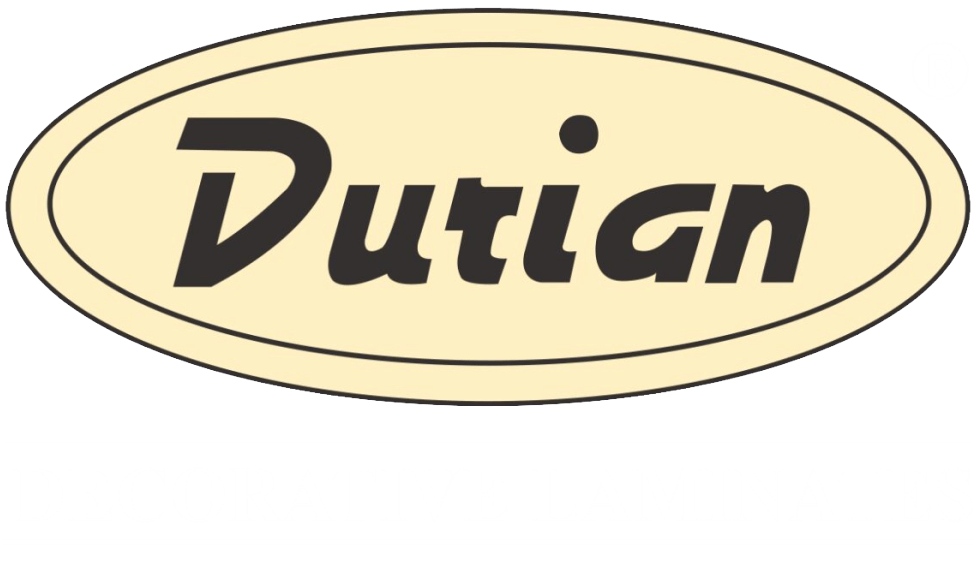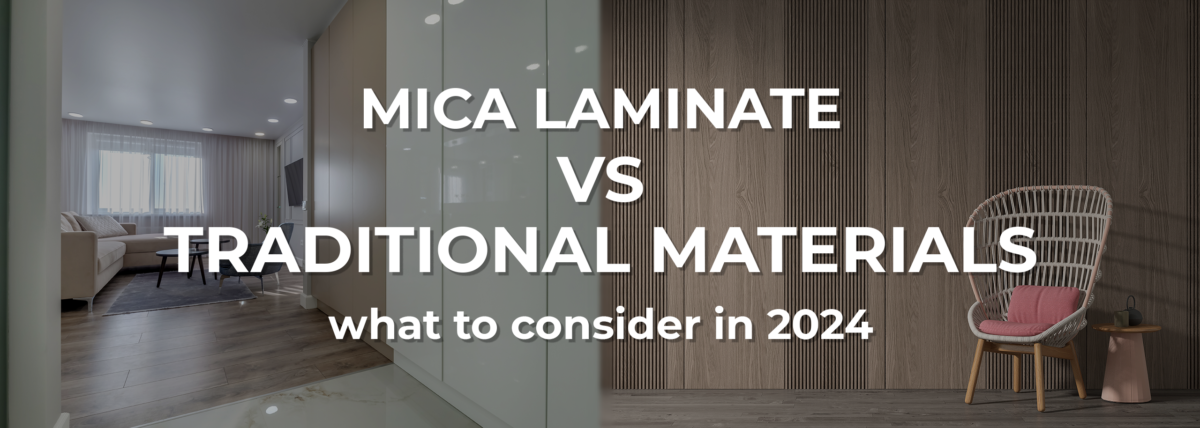Choosing the right material for your home or office renovation can be overwhelming, especially with the wide array of options available today. In 2024, mica laminate and traditional materials are among the top contenders. This article delves into the comparison between mica laminate and traditional materials, examining various factors to help you make an informed decision.
What is Mica Laminate?
Mica laminate is often referred to simply as laminate, which is a composite material created by pressing thin layers of fabric together. These layers are soaked in resin and then topped with a decorative layer.
People love using mica laminates for furniture, cabinets, and decorating their homes because they are flexible and budget-friendly.
Comparative Analysis: Mica Laminate vs. Wood
Durability: Mica laminate is perfect for busy spaces because it doesn’t scratch easily. Also, it withstands moisture, and handles everyday wear and tear well. On the other hand, wood is strong but can get scratched, dented, and damaged by water if not cared for properly.
Cost: Mica laminate is usually cheaper than wood. It gives you the look of natural wood without the high cost. Solid wood, especially hardwoods like oak and maple, can be quite expensive.
Aesthetic Appeal: Wood gives a unique, warm feel that’s tough to match. However, today’s mica laminates offer many wood-look finishes that fit different design styles.
Comparative Analysis: Mica Laminate vs. Stone
Durability: Stone is more durable than mica laminate. If you don’t have budget problems and are looking for something more durable, you can go for stone.
Cost: Natural stone is a lot pricier than mica laminate because of the costs involved in quarrying, cutting, and transporting the stone.
Aesthetic Appeal: Stone offers a unique, natural beauty with variations that enhance its charm. Mica laminate can mimic the appearance of stone but often lacks the depth and texture of the real thing.
Environmental Impact
Sustainability: Mica laminate is generally more eco-friendly than traditional materials. It uses fewer natural resources and can be made from recycled materials. Plus, new manufacturing methods have made laminates even more environmentally friendly.
Environmental Footprint of Traditional Materials: Traditional materials like wood and stone often have an environmental footprint due to the extraction processes involved. Using sustainable sourcing can reduce this impact, but it’s not always done.
Installation and Maintenance
Ease of Installation: Mica laminate is relatively easy to install. It can be cut and shaped to fit various spaces and typically requires less specialised labour compared to materials like stone and wood.
Maintenance Requirements: Low-maintenance, requiring only regular cleaning to keep it looking new. Traditional materials may require more intensive maintenance, such as polishing, sealing, or refinishing.
Versatility and Customization
Mica laminate offers a wide range of design options, from wood and stone looks to bold, modern patterns. This versatility makes it suitable for various design styles and personal preferences.
Traditional materials can also be customised, but often at a higher cost. Custom woodwork or stone carving can create unique and personalised spaces but require skilled craftsmanship.
Safety Considerations
Safety Features: Mica laminate is generally safe to use, with many products meeting fire-retardant standards. It is also resistant to mould and mildew, making it a good choice for kitchens and bathrooms.
Safety Features of Traditional Materials: Traditional materials have varying safety profiles. For instance, wood needs to be treated to be fire-resistant, and stone can be slippery when wet. Metal can have sharp edges if not properly finished.
Longevity and Lifespan
Lifespan: Mica laminate can last for many years if properly maintained, but it may not match the decades-long lifespan of stone or high-quality wood.
Lifespan of Traditional Materials: Traditional materials like stone and wood can last for generations with proper care. Metal also has a long lifespan but may require protection against rust and corrosion.
Market Trends in 2024
In 2024, sustainability and versatility are driving trends in interior design. Homeowners and businesses are looking for materials that offer both aesthetic appeal and environmental benefits.
Mica laminate is gaining popularity due to its affordability and design versatility. However, traditional materials continue to hold their place in high-end and heritage projects.
Cost-Benefit Analysis
Mica laminate generally offers a more cost-effective solution than traditional materials. It provides a balance between aesthetics, durability, and cost.
While the initial investment in traditional materials may be higher, they can offer better long-term value through their longevity and timeless appeal. Mica laminate provides good value for money, especially for those looking for a budget-friendly option.
Case Studies and Examples
Mica laminate is widely used in modern kitchens, office spaces, and commercial settings due to its ease of maintenance and variety of design options.
Examples of Traditional Materials in Modern Design : High-end homes and luxury commercial spaces often feature natural stone countertops, hardwood flooring, and metal accents, showcasing the enduring appeal of these materials.
Conclusion
When deciding between mica laminate and traditional materials in 2024, consider factors such as cost, durability, aesthetic appeal, and environmental impact.
Mica laminate offers versatility and affordability, making it an excellent choice for many applications. However, traditional materials provide unmatched durability and a timeless look that may be worth the investment. The final choice depends on your budget and preferences.


No Comments